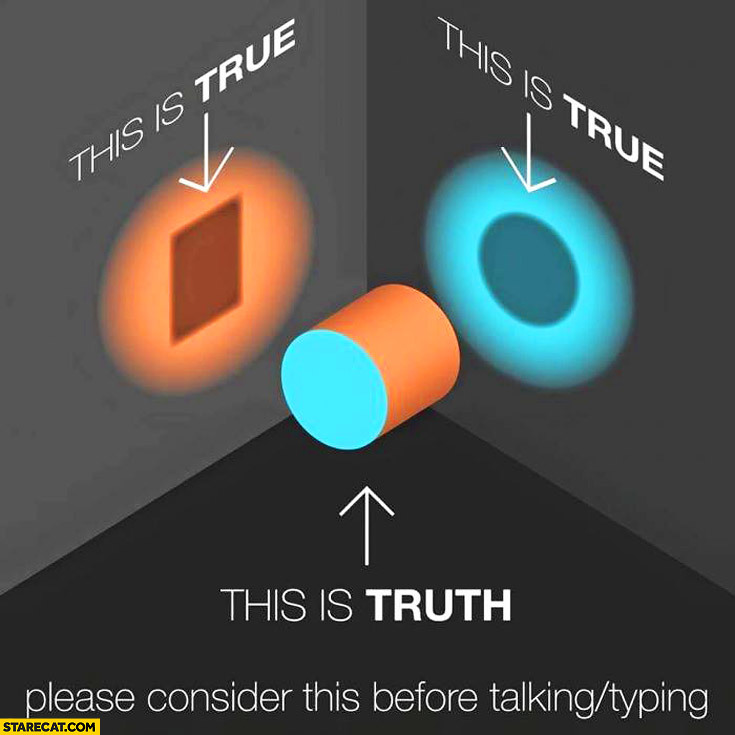I have had this comparison in my head for many years: Truth is like a crystal. It has many different sides, each representing single facets of truth. This is why it’s important to assume different perspectives: From a single perspective you only see a limited number of facets. Only when you can view something from sufficiently many sufficiently different perspectives there is a chance to understand that object in a holistic and complete way.
For me this has been nearly obvious, at times. Yet, multi-perspective thinking seems to be rare. One reason why it’s rare is that it’s hard: You have to switch from one perspective to another, changing the way you think over and over, without declaring a single perspective as absolute truth. This makes you vulnerable to uncertainty and even fear that you have been wrong about many foundational beliefs for so long. Sticking to a single perspective makes the world simple – it’s true complexity appears manageable. A clear order emerges out of the chaos. An order which you can rely on to provide you clear guidance. But this is the path to extremism and fanaticism.
The other extreme is to go the other way of post-modernism, cultural relativism, and nihilism: There is no real truth, only different truths. But my picture of truth as crystal easily disproves that assertion as fallacy: There is indeed the crystal, of which its facets are merely parts which can easily be observed. However, the facets are integral parts of the crystal, which can indeed be comprehended in its entirety, if one knows all the facets.
You might even go deeper with the crystal metaphor and start with the crystal (group) structure that defines how the atoms in the crystal are aligned. That would represent a deep theoretical understanding. Still, that wouldn’t be enough, because different crystals grow into different shapes regardless: Some are smaller, some are larger, some have impurities. And they can be polished or fractured. Empirical observation is still important, even if you are in possession of the “core of knowledge”.
Actually, I have recollected my crystal metaphor when I thought about the conflicts of my co-workers. They easily see the faults of the others, but would never think about admitting their own faults. It’s so much easier to create narratives about how the others are responsible for things that went wrong. And it’s so much easier to blame others, to unload all guilt on others, than to work on one’s own faults. The funny thing is that they are often quite right about what the others do wrong. But it’s not the whole story, it’s only their own perspective, it’s the facets they see.
Empathy starts with assuming the perspective of another being. It’s a natural step towards multifaceted thinking. Still, it’s not enough. Two perspectives are better than one, but they might still not add up to a complete picture. This is why diversity is so important. With many sufficiently different perspectives we are able to see a problem from so many angles that we start understanding it fully, and easily find the best ways to address it. And here emerges a connection between holistic understanding, multi-perspective thinking, and collective intelligence. Collective intelligence works best when people are as different as possible, while still being able and willing to work together.
This requirement for diversity is why I embrace the creation of artificial intelligences which are radically different from humans, while they might still share some essential human traits, so that we can still collaborate with them on a meaningful level. It also makes me embrace the connection of human and non-human minds with technological telepathy and empathy. This trans-human level of diversity will open up radically new perspectives to us. It will make us see and understand more. It will make us wiser, more powerful, and more capable than we could ever be as singular human species.

Truth is a crystal with a thousand facets. So let a thousand eyes grow and connect to see them all!
– freely adopted from the quotation “Let a thousand flowers bloom”.
